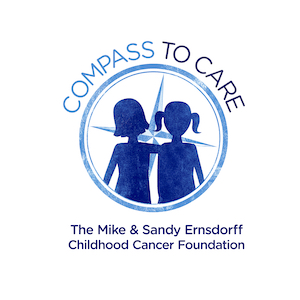You wouldn’t normally see a 4-year-old riding his dirt bike to cancer treatment. But if you were in the tunnels at the Mayo Clinic this past spring, you may have seen Sam doing just that.
In March, Sam was diagnosed with a medulloblastoma brain tumor after suffering through headaches, a double-ear infection and a swollen optic nerve. He underwent surgery at the University of Iowa Children’s Hospital (UICH), where doctors were able to remove most of the tumor.
Then his parents, Joel and Courtney, had to make a decision about the next phase of his treatment. They needed to choose between traditional photon radiation treatment or traveling hundreds of miles away to use the newer proton radiation therapy. Their doctor was recommending proton therapy for Sam’s particular kind of cancer, because of its location.
Because proton therapy is a targeted beam of radiation, it can be aimed precisely at the cancer cells, and kept closer to the targeted area. This helps protect vital organs that are nearby, and is especially effective in the brain.
Courtney was mostly apprehensive about having to put Sam under anesthesia every day for the treatment.
“But once they explained that proton therapy is just so precise – the child can’t move more than a millimeter during treatment – then I thought, ok, it’s necessary and I was ok with it,” she recalled.
“What sold us on proton therapy was the difference in the side effects,” says Courtney. “The end results are usually about the same, but the side effects are way different. Proton therapy eliminates a lot of those caused by traditional radiation.”
Although Sam did lose most of the hair located just around the targeted area, he hasn’t experienced any of the traditional negative side effects. “He has a great energy level and always wants to play,” his mom says. “Really, we’ve seen nothing but improvement since the surgery.” Naturally, every case is different, and the side effects experienced by each child will vary.
 Traveling 196 miles to the Mayo Clinic every week for treatment would prove to be expensive. Sam would have to be in treatment five days a week for six weeks. This meant he and his parents would have to make the long drive from Iowa to Minnesota and back again, once a week, coming home only on weekends. During these long weeks, Sam was missing his older sister. Madelyn missed him, too, but fortunately, she was able to stay in Iowa with her grandparents, and go to school, while the rest of the family was in Minnesota.
Traveling 196 miles to the Mayo Clinic every week for treatment would prove to be expensive. Sam would have to be in treatment five days a week for six weeks. This meant he and his parents would have to make the long drive from Iowa to Minnesota and back again, once a week, coming home only on weekends. During these long weeks, Sam was missing his older sister. Madelyn missed him, too, but fortunately, she was able to stay in Iowa with her grandparents, and go to school, while the rest of the family was in Minnesota.
Sam has finished proton therapy and is currently undergoing follow-up chemotherapy at UICH, which is about an hour closer to home. During this phase of treatment, they usually only have to be gone from home a day or two at a time.
Courtney credits their UICH social worker with connecting them with Compass to Care before they began traveling to Minnesota.
“He’s great. We didn’t even realize organizations like this even existed until he told us about Compass to Care,” she recalled. “You don’t think about the other aspects of treatment until you are thrown into it.”
“Thank you for everything you’ve done. It’s very helpful to not have to worry about the extra aspects of treatment. The fact that we do not have to worry about gas and parking is amazing,” Courtney said.

